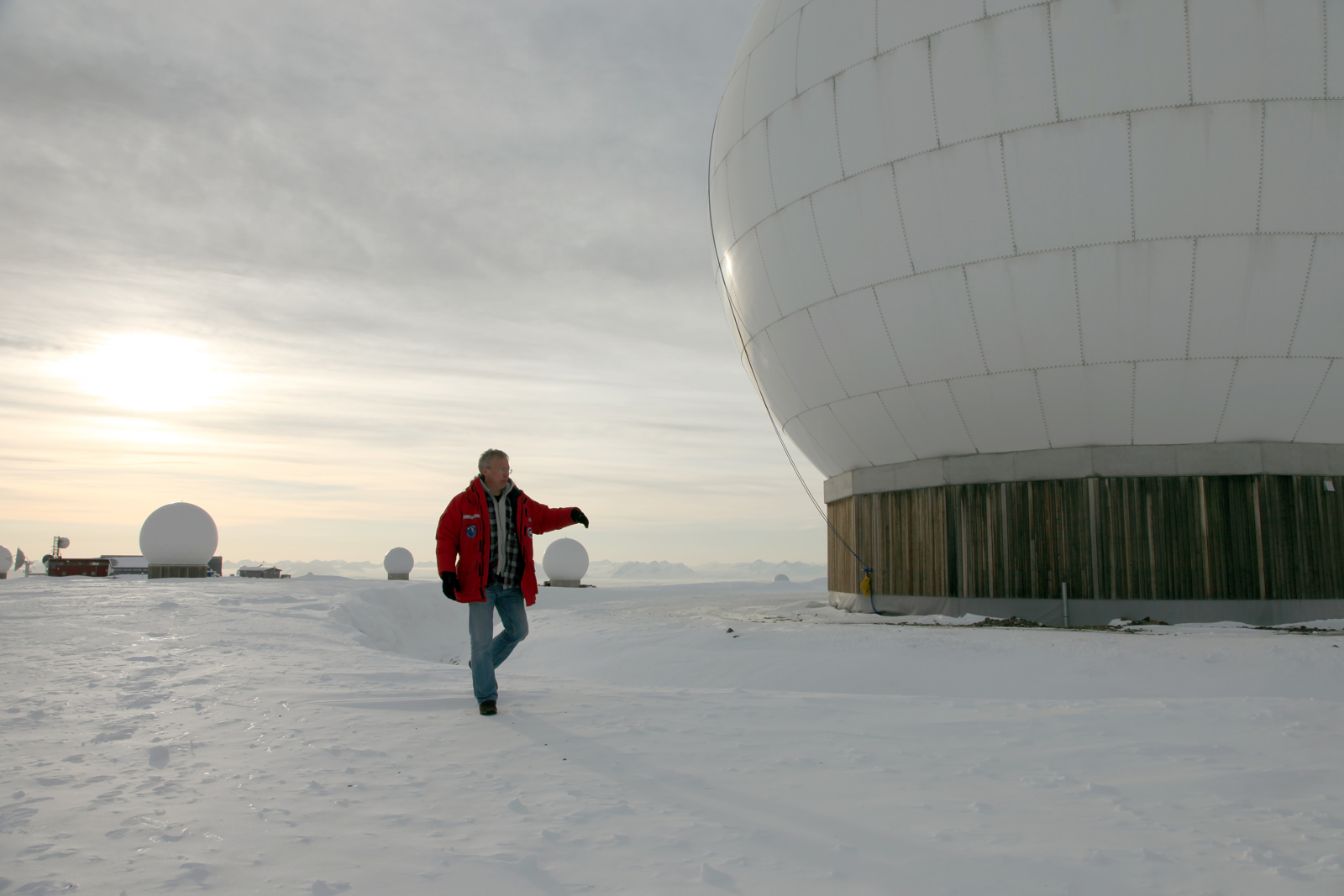
Building giant radomes is not child's play. But 3000 polar bears aren't going to stop Reidar Norheim from having fun at work.
-
Text:OVE RONNY HARALDSEN
-
Ove Ronny HaraldsenGroup Communication Manager
“I hope its cold and snowing and horrible weather in Tromsø. It’s not long until you have to dig out your national costume and fulfil your civil duty in the 17th May procession.”
Reidar Norheim is sitting on the sofa with his mobile phone pressed against his ear. He is the manager of Hosting and Infrastructure at Kongsberg Satellite Services. His job is selling aerials to customers, then building them. In front of him on the table are drawings of one such aerial.
He wears his thick, worn lumberjack shirt open. A black T-shirt underneath bears the name Harley Davidson, indicating an interest in large, heavy toys for boys. He is wearing woolen socks stuffed into a pair of sandals.
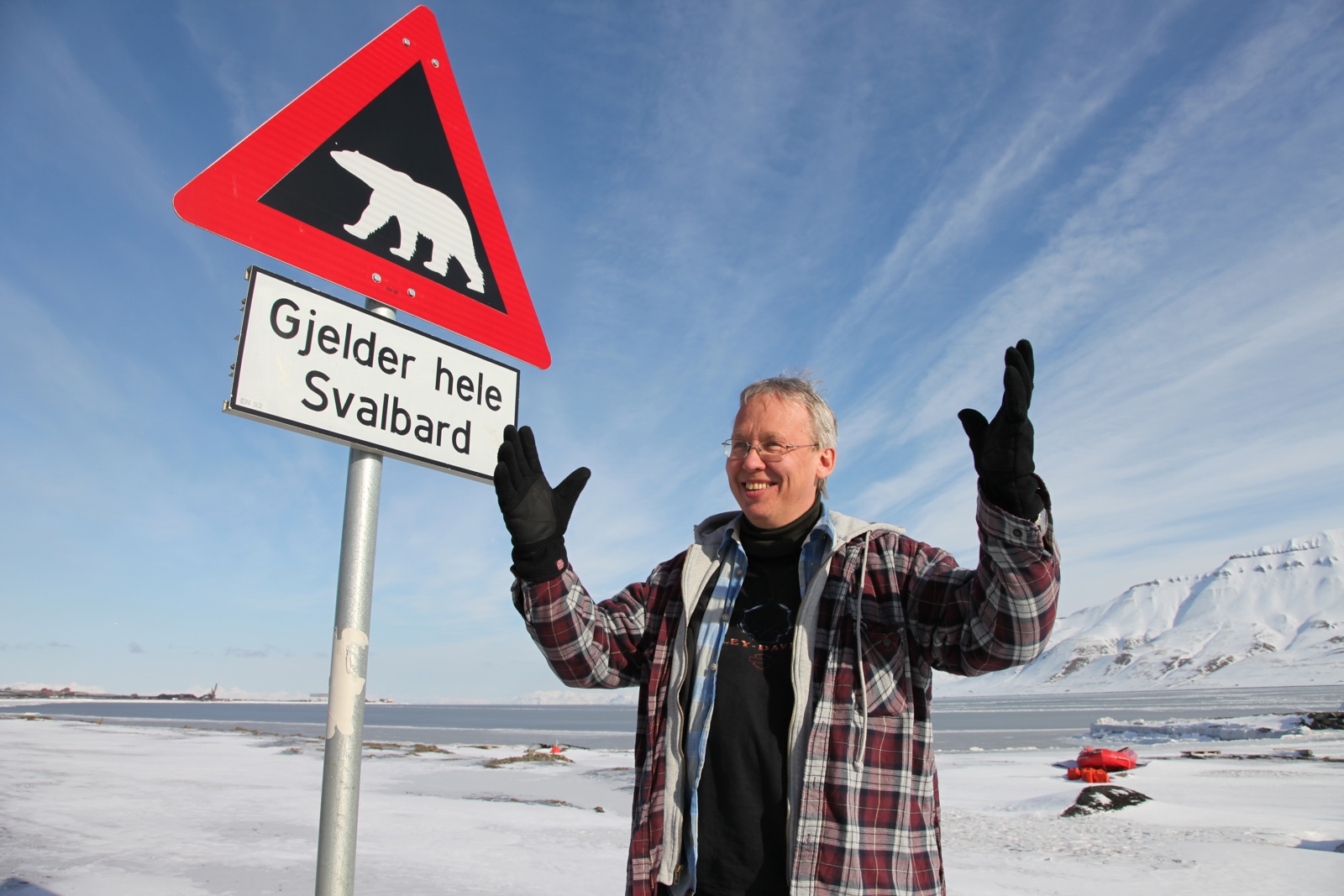
“I was just talking to Stig Kræmer. He is my next in command in Tromsø and is very talented. We just found out that one of the drawings won’t be used.”
Reidar has a great sense of humour and uses this when communicating with the world around him. And he doesn’t take himself too seriously either.
There is a rumour from a time several Americans from NASA came to visit Reidar. They wanted to know how he managed to get people to come and work for him in such a freezing wasteland just below the North Pole. The rumour has it that he patted his revolver and answered:
“That’s not the problem. The worst part is getting rid of them. And the only way to do that is take them behind a corner and shoot them.”
When confronted with this rumour, Reidar Norheim neither confirms or denies his choice of wording. But his cunning smile indicates that the rumour may just be true.
SPELLBOUND BY THE ARCTIC
Reidar Norheim has now worked for 13 years as station manager on Spitsbergen. When he first arrived on the island, he and his crew lived in barracks without a kitchen or toilet on the naked mountain plateau outside of Longyearbyen town.
“We had to do our business in the snowdrifts outside the barracks. It was seen as bad manners to make yellow holes in the snow we used to get water for our coffee,” he reminisces with a smile.
At that time, his job was to build up the station and prepare procedures for operations. What was intended as a stay of 3 months turned into 13 years.
“Spitsbergen is an insidious place. Before you know it, it has taken you over and suddenly you just love it here. There is something incredibly alluring about these Polar areas which grabs a hold of you.”
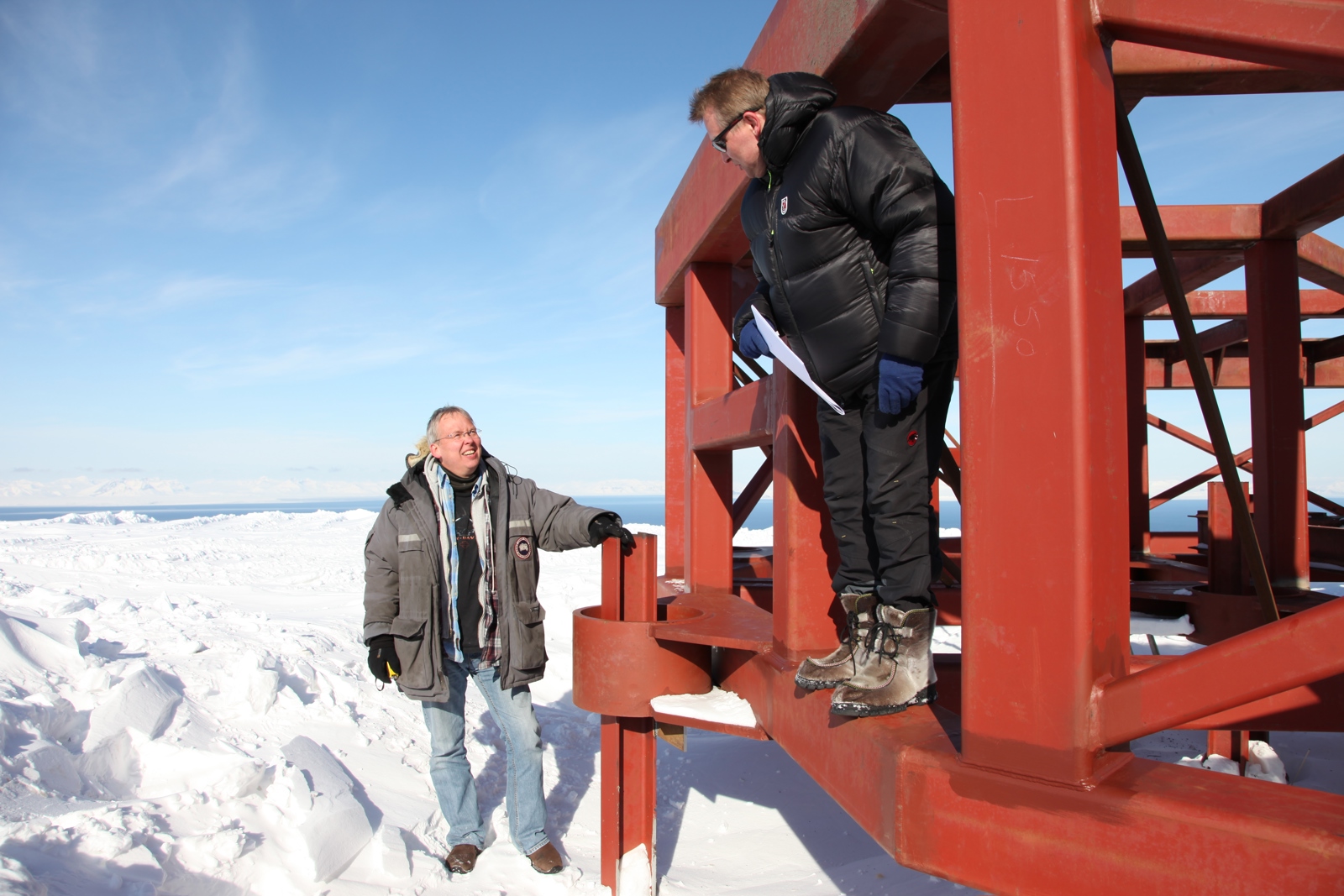
Reidar packs up the drawings. We are on our way out to investigate the foundations for the new aerial which is being built for the space travel organisation COM DEV. While we are pulling on our boots, Reidar disappears into the room beside us, unlocks a heavy metal cabinet and comes back out again carrying a pretty huge revolver.
In what is obviously a common maneuver, he straps the revolver to his body. Just like Dirty Harry, he feels naked without his Magnum 44.
CONSTANT THREAT FROM POLAR BEARS
“The last attack by a Polar bear with fatalities was up on the plateau here in 1995. Two girls were out skiing when they met a young bear which attacked them. One of the girls was killed by the bear while the other saved her life by jumping off the mountainside. She was found several hundred metres down the mountain and only suffered a broken collar bone and other minor injuries.”
“When I asked my manager to be tranferred south, he sent me to the South Pole"
There are around 3,000 Polar bears on Spitsbergen and 2,000 people. Reidar Norheim knows what it feels like to have a Polar bear of up to 800 kilos close up.
“We were in our cabin when my wife heard heavy footfalls outside and something scraping on the walls. It was pitch dark outside and I got out of bed and found my gun pretty quickly. But I couldn’t find my glasses and I’m so short-sighted I could hardly see anything. Our daughter was in one of the bedrooms. If a Polar bear gets a paw through a window, it will keep digging around the room until it gets a hold of something. We started hitting the walls and shouting as loud as we could. Luckily the Polar bear decided it was best to leave.”
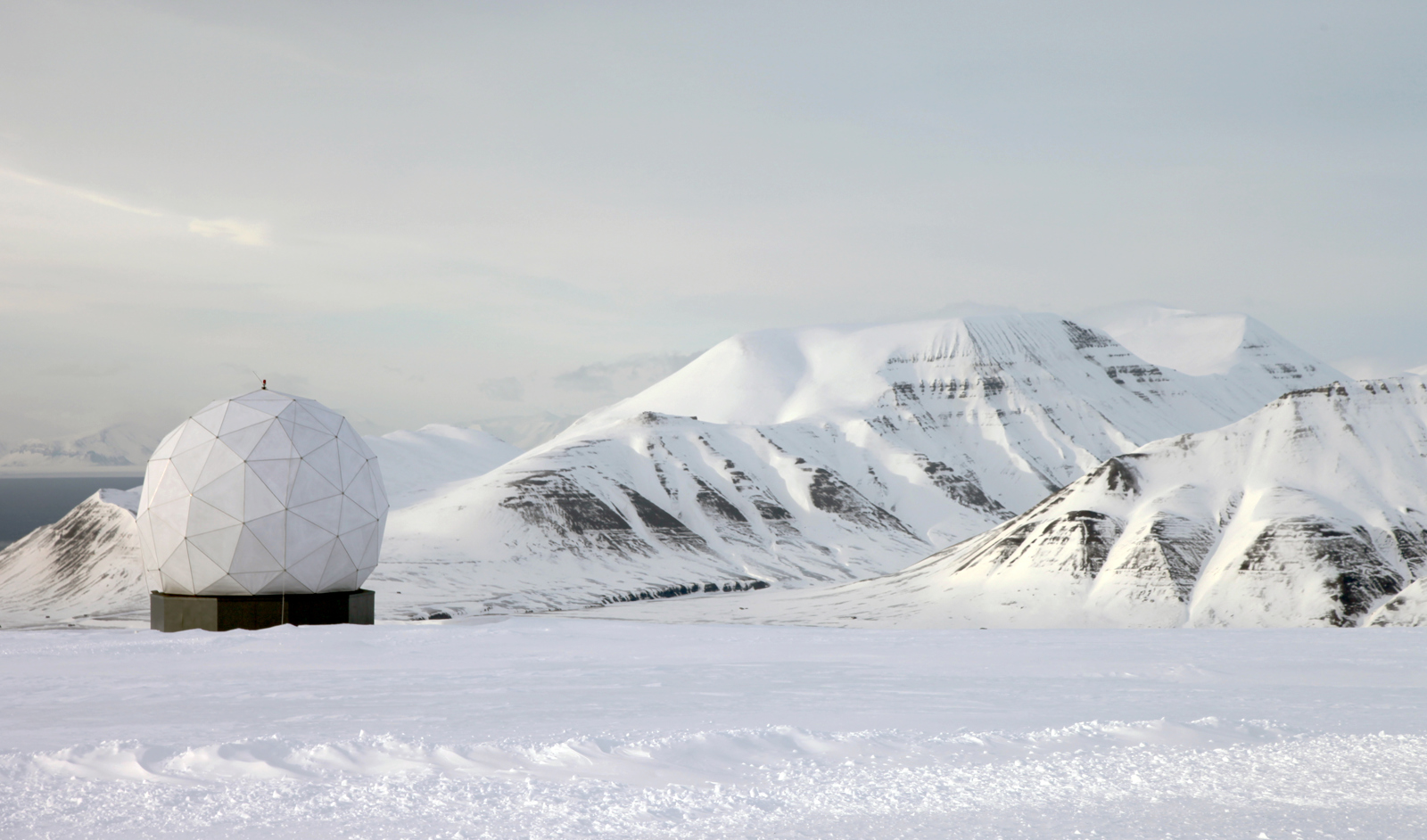
We meet no Polar bears as we drive down to the foundations we are to inspect withthe contractor who has built everything, from radomes to the road we are driving on. The views of the Isfjord are breathtaking. Spitsbergen is described as one of the last untouched wildernesses in Europe.
“Here you can see that we have developed foundations in steel. These are much quicker to assemble than concrete foundations which we used to use. When winds reach hurricane force, the radome can be exposed to a lifting force of 40 tons. At the same time, the aerial has to remain stable, without vibrating. That’s why everything I build up here is heavy and robust, even if it means extra costs.”
We get back in the car. By force of habit, Reidar doesn’t put on his safety belt. In the time before the road up to the station had protection against rock and snowfalls, it was more important to make sure you could get out of the car quickly. That probably explains why he has bought a huge, black Hummer H2 while living up here.
“I was thinking of taking it with me to Tromsø, but had no intention of paying 800, 000 kroner to the Minister of Finance for a toy,” he explains and points to the huge vehicle owned by the new station manager.
FAD FOR TOYS
Reidar Norheim describes most things as his toys and is most happy when he is allowed to build something. He is not fond however of writing meticulous reports, and chooses to leave that job to others.
“We can’t all be good at everything,” he says with a wry smile before continuing on a more serious note. “I have my weaknesses too. That’s why I employ people with the right expertise who can take care of the need for detailed reports, archives and documentation.”
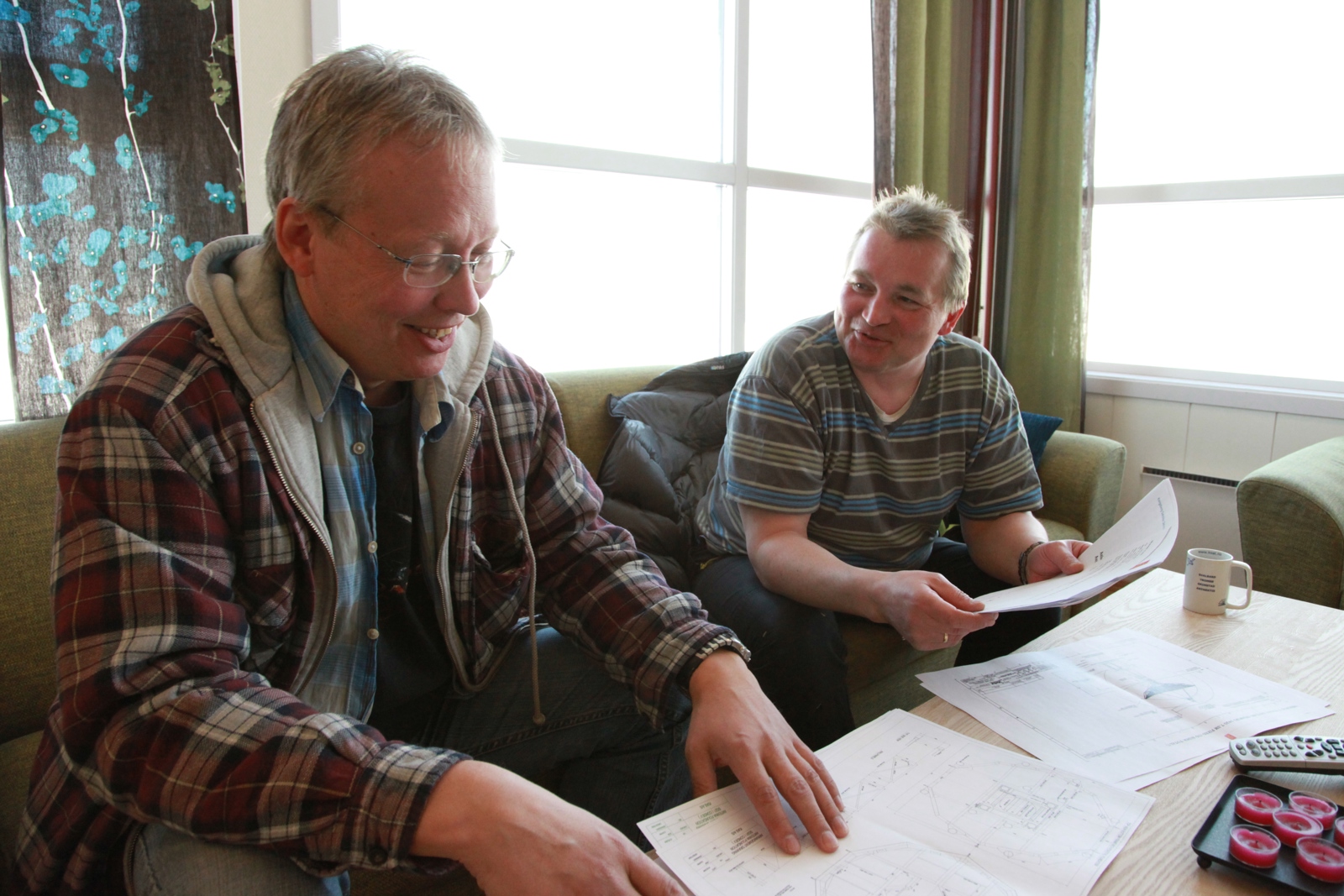
After several years of establishment on Spitsbergen, the procedures were completed and Reidar Norheim felt that his days were spent just administrating operations. This kind of work doesn’t satisfy a creative personality so he told his boss that he wanted to travel south.
“He just said yes, without argument. I should have taken that as a warning sign. Instead of sending me to the mainland, he sent me to the South Pole to set up a station down there. It was definitely south and I took it with a smile. I couldn’t’ really complain. After all, I had asked to travel south. Since then, I’ve learnt to be more specific when I ask a question,” explains Reidar with a crafty smile.
In November, he is due to travel back to the Antarctic where Kongsberg Satellite Services is in the processing of establishing several aerials to download satellite data. They are the only company to offer downloads at both poles. Reidar Norheim is proud of what he has helped build up, but it has come at a price.
ENGINEER AND SALESMAN
“When I was getting ready to move from Spitsbergen, the mayor up there said to me that I’d only been there half the time and he was right. I have travelled for up to 200 days a year and when you go to the Antarctic, you tend to stay there for three months at a time. I’m divorced now. It’s hard to say whether I’d still be married if I’d had a different position within the company. But one thing is clear; when you put all your efforts into one thing - other things are going to suffer.”
Today, Reidar Norheim has his office in Tromsø where Kongsberg Satellite Services has its main office. When he is not on Spitsbergen or at the South Pole, Reidar is out a lot meeting customers. The Swedes are our greatest competitors and it takes a lot of hard work to win new customers and contracts. The engineer has now become a marketing man and has learned the customs of negotiating with both Japanese and Arabs. Even though it may be difficult to imagine, he now actually owns more than one suit.
“I can play the whole formal part when required and I can wear a suit. But after meeting people in that way, I’ve been told that they liked the old Reidar better.”
AN INNER PEACE
When we get back to the station, a wheeled loader is at work clearing the snow from the car park. The powerful machine is covered in dry, light snow as it works its way through the snowdrifts which have accumulated through the night.
Reidar stops his car at a distance and waits. That’s when I realise how patient Reidar is. There’s no drumming his fingers on the steering wheel and getting annoyed at the delay as many of us would have done. I ask Reidar to share some of his Polar wisdom with our readers.
“On Spitsbergen, the nature is so brutal. You can be standing there with a schedule and a full storm blows up, taking your schedule with it. You learn to accept that you are not in control of everything. You also learn to make use of time spent waiting - to do something useful instead of just sitting around getting annoyed and bringing on high blood pressure.”
“You could say that Spitsbergen and the nature up here help you become a more harmonious person and you learn to calmly tackle all obstacles. It’s a question of finding other ways around things and other solutions,” explains Reidar, waving to the caretaker who has just finished clearing away the dry Polar snow which fell during the night.


